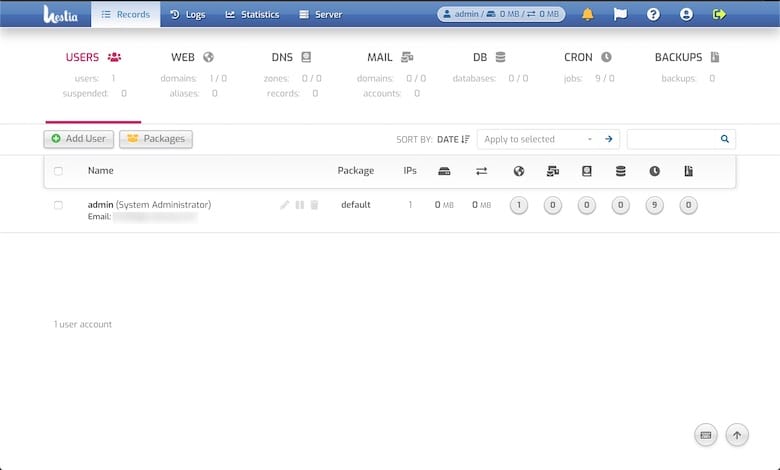How To Install Hestia Control Panel on Ubuntu 24.04 LTS

Managing a web server can be a complex task, especially for those new to server administration. Fortunately, control panels like Hestia Control Panel (HestiaCP) simplify this process significantly. In this comprehensive guide, we’ll walk you through the installation of HestiaCP on Ubuntu 24.04 LTS, providing you with a powerful tool to manage your web hosting environment efficiently.
Introduction
Hestia Control Panel, often referred to as HestiaCP, is a free and open-source web hosting control panel that has gained popularity among server administrators and web hosting providers. It offers a user-friendly interface for managing various aspects of web servers, including websites, email accounts, databases, and DNS zones.
HestiaCP stands out for its lightweight design, robust security features, and active community support. By installing HestiaCP on Ubuntu 24.04 LTS, you’re combining a powerful control panel with a stable and secure operating system, creating an ideal environment for hosting websites and web applications.
Prerequisites
Before we dive into the installation process, let’s ensure you have everything needed to successfully set up HestiaCP on your Ubuntu 24.04 LTS server.
System Requirements
HestiaCP is designed to run efficiently on various server configurations. However, to ensure optimal performance, consider the following specifications:
- Minimum Requirements:
- 1 CPU core
- 1 GB RAM
- 10 GB HDD
- Recommended Specifications:
- 4 CPU cores
- 4 GB RAM
- 40 GB SSD
While HestiaCP can run on the minimum requirements, opting for the recommended specifications will provide a smoother experience, especially when hosting multiple websites or running resource-intensive applications.
Operating System
This guide focuses on installing HestiaCP on a fresh installation of Ubuntu 24.04 LTS (Long Term Support). Ensure you have a clean installation of Ubuntu 24.04 LTS on your server before proceeding. Using an LTS version guarantees long-term stability and security updates, making it an excellent choice for production environments.
Network Requirements
To properly set up HestiaCP, you’ll need:
- A valid domain name pointing to your server’s IP address
- Proper DNS configuration to ensure your domain resolves correctly
Having a correctly configured domain is crucial for accessing your HestiaCP installation and managing your websites effectively.
User Access
To install HestiaCP, you’ll need either:
- Root user access to your server, or
- A non-root user with sudo privileges
For security reasons, it’s recommended to use a non-root user with sudo privileges when possible. This practice adheres to the principle of least privilege, enhancing your server’s overall security posture.
Step-by-Step Installation Guide
Now that we’ve covered the prerequisites, let’s dive into the installation process. Follow these steps carefully to set up HestiaCP on your Ubuntu 24.04 LTS server.
1. Update and Upgrade System
Before installing any new software, it’s crucial to ensure your system is up-to-date. This step helps prevent potential conflicts and ensures you have the latest security patches.
sudo apt-get update && sudo apt-get upgrade -yThis command updates the package lists and upgrades all installed packages to their latest versions. The ‘-y’ flag automatically answers “yes” to any prompts, streamlining the process.
2. Set Hostname and Verify
Setting a Fully Qualified Domain Name (FQDN) as your hostname is important for proper server identification and email functionality. Use the following commands to set and verify your hostname:
sudo hostnamectl set-hostname yourdomain.com
hostnamectlReplace ‘yourdomain.com’ with your actual domain name. The second command verifies that the hostname has been set correctly.
3. Install Required Packages
HestiaCP requires several packages to function properly. Install them using the following command:
sudo apt install ca-certificates software-properties-common apt-transport-https gnupg wget unzip -yThis command installs essential packages like SSL certificates, software properties management tools, HTTPS transport for APT, GNU Privacy Guard, wget for downloading files, and unzip for extracting compressed files.
4. Download HestiaCP Installation Script
Next, download the HestiaCP installation script using wget:
wget https://raw.githubusercontent.com/hestiacp/hestiacp/release/install/hst-install.shThis command fetches the latest version of the HestiaCP installation script directly from the official GitHub repository.
5. Run the Installation Script
With the installation script downloaded, it’s time to execute it:
sudo bash hst-install.shThis command starts the interactive installation process. You’ll be prompted to confirm various installation options and provide necessary information:
- Confirm the installation by typing ‘y’ when prompted.
- Enter your email address when asked. This email will be used for important notifications and as the default email for the admin account.
- Confirm your FQDN hostname.
- Choose whether to install additional components like PHP versions, web server (Apache or Nginx), DNS server, mail server, etc.
- Decide whether to use the Let’s Encrypt SSL certificate for the control panel.
The installation process may take 15-30 minutes, depending on your server’s performance and the options you’ve selected. Once completed, you’ll receive login credentials for your HestiaCP admin account.
6. Configure Firewall Settings
Properly configuring your firewall is crucial for securing your server while allowing necessary access. Ubuntu comes with UFW (Uncomplicated Firewall), which we’ll use to set up basic rules:
sudo ufw allow ssh
sudo ufw allow http
sudo ufw allow https
sudo ufw allow 8083/tcp
sudo ufw enableThese commands allow SSH access (port 22), HTTP (port 80), HTTPS (port 443), and the HestiaCP web interface (port 8083). The last command enables the firewall with these rules.
7. Accessing Hestia Control Panel
With the installation complete and firewall configured, you can now access your HestiaCP web interface. Open a web browser and navigate to:
https://yourdomain.com:8083 or https://server-ip:8083
Replace ‘yourdomain.com‘ or ‘server-ip‘ with your actual domain or server IP address. You may encounter an SSL certificate warning on your first visit. This is normal if you didn’t opt for a Let’s Encrypt certificate during installation. You can safely proceed to the HestiaCP login page.

Post-Installation Configuration
1. Initial Login and Dashboard Overview
Use the credentials provided at the end of the installation process to log in to your HestiaCP dashboard. Upon your first login, take some time to familiarize yourself with the interface. The dashboard provides an overview of your server’s resources, installed packages, and quick access to various management tools.
Key areas to explore include:
- User Management
- Web Domains
- Mail Domains
- Databases
- File Manager
- Backups
- Server Statistics
2. Basic Security Configurations
To enhance the security of your HestiaCP installation, consider implementing these basic security measures:
- Change Default Admin Password: Navigate to “User” > “Profile” and set a strong, unique password for your admin account.
- Enable Two-Factor Authentication (2FA): In the same “Profile” section, you can enable 2FA for an additional layer of security. HestiaCP supports various 2FA methods, including Google Authenticator.
- Regular Updates: Keep your HestiaCP installation up-to-date by regularly checking for and applying updates through the web interface or command line.
Troubleshooting Common Issues
While HestiaCP installation is generally smooth, you might encounter some issues. Here are solutions to common problems:
- Installation Fails Due to Unsupported OS: Ensure you’re using a supported version of Ubuntu. As of this writing, Ubuntu 24.04 LTS is the latest supported version.
- Unable to Access Web Interface: Check your firewall settings and ensure port 8083 is open. Verify that your domain or IP is correctly pointing to your server.
- SSL Certificate Warnings: If you didn’t use Let’s Encrypt during installation, these warnings are normal. You can install an SSL certificate later through the HestiaCP interface.
- Email Configuration Issues: Ensure your server’s hostname is set correctly and that reverse DNS is properly configured for your IP address.
Congratulations! You have successfully installed HestiaCP. Thanks for using this tutorial for installing the Hestia Control Panel on your Ubuntu 24.04 LTS system. For additional help or useful information, we recommend you check the official Hestia website.